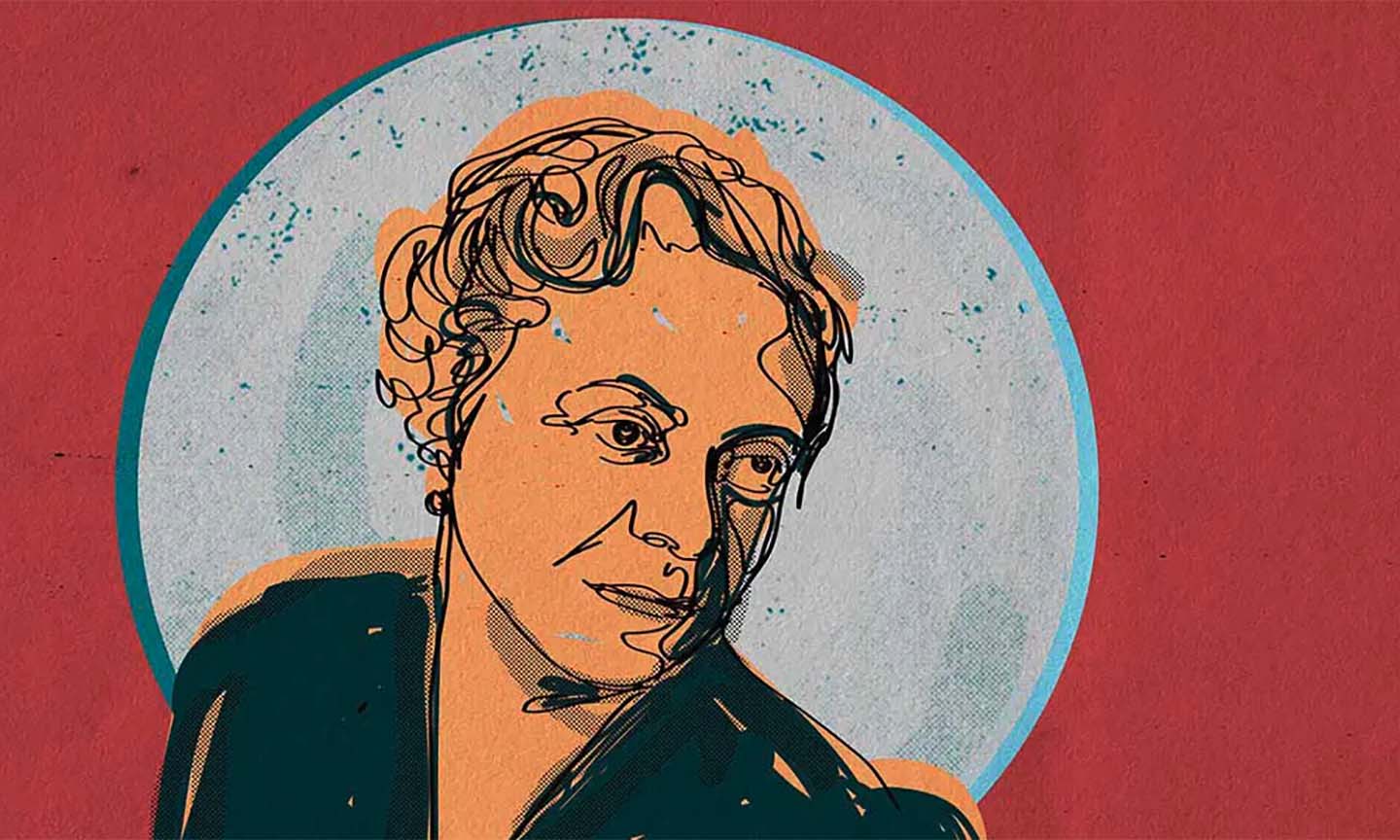How could a huge treasure-trove of manuscripts by a significant composer lie forgotten in a derelict building for more than half a century? It would be the stuff of dreams if it didn’t spark a sense of fury as well. In 2009 the new owners of what had once been Florence Price’s summer house in St Anne, Illinois, discovered her papers moldering away in the property they were about to renovate. Though celebrated in the 1930s as the first Black American woman to have a symphony performed by a major US orchestra, she was largely forgotten after her death in 1953, her legacy not just neglected, but literally abandoned. Among the manuscripts were her two violin concertos and her Symphony No. 4.
The poet Langston Hughes – a friend of composer Florence Price – wrote that a “dream deferred” might ultimately explode. Price’s dream was deferred for many decades; now, at last, it seems to be exploding in the best possible way. Recordings cannot be much more high-profile than the Philadelphia Orchestra conducted by Yannick Nézet-Séguin on Deutsche Grammophon whose critically acclaimed album, Florence Price: Symphonies Nos. 1 & 3, won Best Orchestral Performance at the 2022 Grammy Awards.
Listen to Yannick Nézet-Séguin and the Philadelphia Orchestra’s recording of Florence Price: Symphonies Nos. 1 & 3 on Apple Music and Spotify and scroll down to rediscover the music of Florence Price.
reDiscover Composer Florence Price
Where did Florence Price’s history go so wrong? As The New Yorker’s music critic Alex Ross wrote: “That run-down house in St Anne is a potent symbol of how a country can forget its cultural history.”
She was born Florence B. Smith, into a mixed-race family in Little Rock, Arkansas, on 9 April 1887. Her musical talent showed early on: she gave her first piano performance at the age of four and her first composition was published when she was 11. Her mother had been a schoolteacher; her father, James H. Smith, was the only Black dentist in the city, highly successful and politically active.
Little Rock only had two Black-owned hotels and local families would therefore often accommodate Black visitors in their homes. The affluent Smiths’ visitors included the concert pianist John Blind Boone, who became a mentor to Florence; the social reformer and abolitionist Frederick Douglass; and the aforementioned Langston Hughes. Neighbours included the Still family, whose son, the composer William Grant Still, therefore coincidentally grew up with Price.
After leaving school at 14, Price entered the New England Conservatory to study organ and piano, having made out, on her mother’s advice, that her background was Mexican. She was one of few Black students, one of the youngest and among only a handful of women. Her composition teacher, George Chadwick, was a major influence and while there she composed her first String Trio and took initial steps towards a symphony.
Price incorporated Spirituals and African American folk melodies
From the start, composer Florence Price incorporated Spirituals and African American folk melodies and rhythms into her work, something Dvorák had encouraged in budding American composers while he taught in New York in the 1890s. This music continued to permeate her works, for instance the Juba dances in the Piano Concerto in One Movement and the Symphonies Nos. 1, 3 and 4 (No. 2 sadly is still missing). The Juba dance was first brought to South Carolina by slaves from Congo; the rhythms hint at it being an ancestor of ragtime.
Price’s early twenties were beset by family problems. After her father’s death, her mother disappeared to her former home of Indianapolis and never contacted her daughter again. The same had been true of Florence’s brother.
Aged 26, Florence married a lawyer, Thomas Price. Having held teaching posts in various colleges in the Atlanta and Arkansas areas, she had become head of the music department of what was later Clark Atlanta University; but her new husband had a legal practice in Little Rock and after moving there she was unable to find work, the town having become racially segregated. In 1927 a Black man was lynched there during an upsurge of racial tensions. Like many others the Price family, with their three children, left the Deep South for the relative safety of Chicago, becoming part of the Great Migration.
Here Florence Price found herself in the midst of the Chicago Black Renaissance, a creative movement spanning the arts in the city’s Black southern areas during the Thirties and Forties. She threw herself with gusto into a fresh period of study, taking lessons in composition, enrolling in language and liberal arts classes and publishing four pieces for piano. Her Fantasie Nègre was premiered in 1930 by the pianist and composer Margaret Bonds, one of Price’s students, at the 12th annual convention of the National Association of Negro Musicians. In 1931, aged 44, Price and her husband were divorced; her second marriage also ended in separation in 1934. She earned a living meanwhile by writing jingles for the radio, plus popular songs under the pseudonym ‘Vee Jay’ and accompanying silent films on the organ.
It was the solidarity of her friends and colleagues in the Chicago Black Renaissance that appears to have provided her with the secure basis that she needed. Having to move in with friends during the years of the Great Depression, she lived with Margaret Bonds, who already enjoyed strong connections with Langston Hughes and the contralto Marian Anderson. In 1932 both composers entered works for the Wanamaker Foundation Awards. Price won first prize for her Symphony No. 1 in E minor and third for her Piano Sonata, while Bonds won the song category.
First Black woman to have a symphony performed by major US orchestra
The famous performance of Florence Price’s Symphony No. 1 by the Chicago Symphony Orchestra under conductor Frederick Stock, the first symphony by a Black woman to be performed by a major American orchestra, took place in 1933, in a program called The Negro in Music, sponsored by the music critic Maude Roberts George. An entire program of Price’s works was presented by the Illinois Host House at the Chicago World’s Fair the same year. Price seemed thereafter to go from strength to strength, with performances of her music given, for example, by two women’s orchestras in Chicago. She was the soloist in the premiere of her own sparkling Piano Concerto in One Movement in 1934.
In 1938 the Works Progress Administration’s Federal Music Project commissioned her Symphony No. 3, which was premiered in 1940 by the Detroit Civic Orchestra, alongside the Piano Concerto. It brings to rich fruition the personal style embryonic in the Symphony No. 1: full of dramatic flair, with powerfully characteristic melodies, intense colors woven through the orchestration, and an irresistibly catchy and upbeat optimism in the Juba Dance third movement that quite belies the grim surroundings of the Depression.
The Detroit Free Press reviewed both works with enthusiasm: “Mrs. Price, both in the [piano] concerto and in the symphony, spoke in the musical idiom of her own people, and spoke with authority.” The review praised the music’s emotional warmth, melodic satisfaction, a slow movement of “majestic beauty” and a “finale which swept forward with great vigor”.
Florence Price became a member of the American Society of Composers, Authors, and Publishers soon afterward. Despite such marks of recognition, however, she was encountering a glass ceiling that was proving impossible to crack.
“To begin with I have two handicaps – those of sex and race”
“My dear Dr. Koussevitzky,” she wrote to the conductor of the Boston Symphony Orchestra, “To begin with I have two handicaps – those of sex and race. I am a woman; and I have some Negro blood in my veins.” She then spoke of Koussevitzky “knowing the worst”. The approach proved fruitless.
Indeed, her musical fortunes seemed to be waning. Her Fourth Symphony was composed in 1945, but never performed in her lifetime. It had to wait until 2018 (nine years after its discovery in the St Anne stash) to be heard in public. Again it features a Juba as scherzo and references to Spirituals, notably ‘Wade in the Water’ in the finale. Among her last works was her Violin Concerto No. 2, a lyrical work in a single movement dating from 1952, when Price was considering a trip to Europe to explore career potential there.
In 1949, composer Florence Price dedicated two of her Spiritual arrangements to Marian Anderson, who sang them frequently. These and her earlier arrangements associated with Anderson, especially My Soul’s Been Anchored in the Lord (recorded by her in 1937), helped to keep Price’s name alive in the years of neglect after her death in 1953.
There was another problem. After World War II, late-romantic styles were being relegated to the past. Musical fashion was turning towards modernism and atonality, perhaps indicating a deep-seated cultural need to leave behind the spheres that had given way to such devastation. Composers such as Florence Price who had always written in traditional forms and idioms were now effectively experiencing a new form of discrimination, from which only certain figures at the very highest level seemed to be excepted (and even then, not always).
Thanks to a tremendous resurgence of interest in the work of neglected female composers and ethnically diverse composers, Price’s music is now being heard at many of the world’s leading concert halls, and is often championed by the excellent Chineke! Orchestra. She is becoming a symbol for swathes of music left behind by a world that seemed to accept only a narrow range of music into the so-called “canon”. Several decades from now, the history of music in the 20th century may be written again. Chances are that it will at last present a very different picture from that generally accepted at the start of the 21st.




